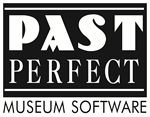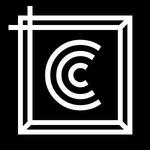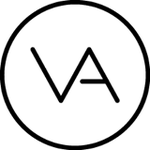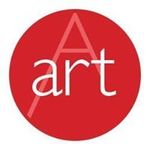What Is Museum Software?
Museum software is a computer solution created expressly for museums, galleries, and other cultural institutions. It is an effective tool for managing all areas of a museum's business, including collections, exhibits, memberships, events, and finances. At its core, museum software is a database that contains all information about a museum's collection and operations.
This includes thorough records for each artifact, artwork, and specimen, making it easier to trace and manage the entire collection. This database also allows curators and staff to do research, analyze data, and write reports for exhibitions and publications. Furthermore, museum software has capabilities that streamline administrative processes and increase efficiency.
These could include computerized inventory management, sales and ticketing systems, and marketing tools for promoting events and displays. The program also includes a platform for online fundraising and donor management, which helps museums get funds and communicate with their supporters. Furthermore, museum software frequently incorporates a visual mapping capability, which allows visitors to explore exhibits and locate specific artifacts by creating interactive floor plans.
This improves the whole tourist experience and can even be applied to virtual tours. One of the most important benefits of museum software is its capacity to increase accessibility and digital engagement. Museums may reach a larger audience and deliver a more immersive and engaging visitor experience by utilizing interactive kiosks, smartphone apps, and online databases. When choosing museum software, you must examine your institution's individual needs and goals.
Look for a solution that provides flexibility and integration with other systems you may be utilizing. In addition, examine the software's scalability and user-friendliness to ensure a smooth and successful installation. Cultural institutions may employ the correct museum software to successfully manage their collections, streamline operations, and deliver an engaging and memorable experience for visitors.
What Are The Recent Trends In Museum Software?
Museum software has advanced significantly in recent years, meeting the ever-increasing demands of museums and cultural institutions. These improvements have resulted in cutting-edge features and functionalities, revolutionizing how museums run and interact with visitors.
Let's look at some of the main trends in museum software that buyers should be aware of.
1. Cloud-Based Solutions: As cloud technology advances, an increasing number of museums are adopting cloud-based museum software solutions. These technologies have various advantages, including cost savings, unlimited storage, increased accessibility, and seamless cooperation among museum staff.
2. Emphasis On Digital Interaction: In today's digital age, museums are emphasizing the importance of internet engagement. To improve visitor experiences, museum software now includes a variety of digital capabilities such as virtual exhibitions, interactive mapping, virtual reality, and augmented reality.
3. Data Analytics And Reporting: Museum software now includes comprehensive data analytics and reporting features. This enables museums to monitor visitor demographics, engagement levels, and make informed decisions to improve their exhibits and programming.
4. Mobile Compatibility: With the proliferation of smartphones and tablets, museum software is becoming more mobile-friendly. This enables museum workers to use the software while on the go, as well as visitors to access interactive features and information from their own devices.
5. Integrated Ticketing And Membership Administration: Many museum software solutions now allow for seamless integration of ticketing and membership management. This makes it easier for museums to manage memberships, ticket sales, and donations, resulting in a more efficient and organized operation.
6. Multilingual Capabilities: To accommodate a wide audience, museum software increasingly includes multilingual capabilities. This enables the translation of exhibit information, audio tours, and online content, making the museum experience more inclusive and accessible.
7. Artificial Intelligence And Automation: Some advanced museum software solutions now include AI and automation features. Chatbots can be used to answer visitor inquiries, as well as to automate operations like inventory management and event planning.
Benefits Of Using Museum Software
Museum software is an invaluable resource for any museum or cultural institution seeking to streamline operations and improve the visiting experience.
This detailed guide will go over the various advantages of investing in quality museum software, allowing you to make an informed purchasing decision.
1. Efficient Collection Management: Museum software has options for digitizing and organizing your collections. This reduces the need for manual record-keeping and facilitates inventory tracking and management, resulting in a more efficient and structured system.
2. Improved Visitor Experience: Museum software allows you to develop interactive displays and multimedia exhibits that engage visitors and enrich their overall experience. This technology also enables virtual tours and online exhibitions, making your collections more accessible to a wider audience.
3. Improved Communication And Collaboration: Museum software facilitates smooth communication and collaboration across staff, departments, and even external partners. This leads to more efficient operations and greater coordination, resulting in better visitor experiences.
4. Streamlined Ticketing And Membership Management: Museum software enables online ticketing and membership management, making it easier for visitors to buy tickets and members to renew memberships. This can increase revenue while reducing the stress of manual ticketing processes.
5. Comprehensive Analytics And Reporting: Tracking visitor statistics, exhibition attendance, and other key indicators is critical to evaluating your museum's performance. Museum software includes powerful analytics and reporting functions that provide useful insights for decision-making and strategic planning.
6. Reduced Danger Of Errors And Losses: The use of museum software considerably decreases the risk of human error and data loss because all information is kept digitally and backed up on a regular basis. Furthermore, with features like as barcoding and RFID technology, you can simply keep track of your collections and avoid loss or theft.
7. Customizable For Your Specific Needs: Museum software can be adjusted to meet your specific needs and specifications. Whether you need features for conservation, curation, or event planning, there are numerous solutions to match your individual requirements.
Important Factors To Consider While Purchasing Museum Software?
When it comes to acquiring museum software, several critical considerations must be examined to guarantee that you get the best solution for your organization. Budget and features, as well as compatibility and support, are all important considerations when making an informed decision.
The following are the most important factors to consider while selecting museum software:
1. Budget: The first and most important aspect to consider is your budget. Determine how much you are willing to spend on museum software and explore for solutions that are within your price range. Keep in mind that the price may vary depending on the features and support offered by the software.
2. Capabilities: Next, consider your museum's specific goals and requirements, and look for software that includes capabilities that meet those demands. Collection management, display planning, and visitor management are some of the main aspects to look for.
3. Compatibility: Before making a purchase, ensure sure the software is compatible with your current systems and hardware. This will prevent compatibility issues and ensure a smooth incorporation.
4. Assistance: It is critical to select a software vendor that provides dependable and timely assistance. Look for solutions that offer 24-hour customer support, training resources, and frequent software updates to guarantee that your museum software functions properly.
5. Customization: Each museum has distinct requirements, and the software should be able to meet those demands. Look for choices that can be tailored to meet your museum's specific needs.
6. User-Friendly Interface: A user-friendly interface is critical since it determines how readily your employees can utilize the software. To reduce the amount of training your team will need, look for choices with a clear and accessible layout.
7. Security: Since museum software generally stores sensitive data, security is an important consideration. Look for choices that provide secure data storage and regular backups to safeguard your sensitive information. Consider these variables to guarantee that you get the proper museum software for your organization's needs and budget. Before making a selection, spend some time researching and comparing your possibilities. This will allow you to make more informed decisions and streamline your museum operations.
What Are The Key Features To Look For In Museum Software?
Museums have transformed from traditional artifact storage to interactive learning and engagement centers. With this transformation, efficient and reliable museum software has become critical for museum management. Choosing the right museum software is a key decision because it has a direct impact on the visitor experience and the museum's overall operations.
When choosing museum software, here are the essential things you should consider:
1. Collection Management: One of the most important roles of museum software is to manage and organize collections. Look for software that will allow you to readily digitize and classify artifacts, including detailed information and high-quality photos. It should also include advanced search and filtering tools to make it easier to find items in the collection.
2. Tourist Administration: To improve the tourist experience, museum software should include features like online ticketing, self-service kiosks, and membership administration. This will streamline the admissions process and make it easier for guests.
3. Point Of Sale (POS) System: A strong POS system coupled with museum software will enable smooth transactions, whether for ticket purchases, gift shop sales, or event registrations. It should also have inventory management features to track and manage the sale of items and souvenirs.
4. Exhibition Management: The program should provide functions for planning, organizing, and managing shows. This covers scheduling, loaning artwork, managing budgets, and assigning tasks. Some software may also include virtual exhibition capabilities, which allow people to view exhibitions online.
5. Education And Interpretation: For museums that provide educational programs, the software should have tools for managing and scheduling seminars, workshops, and tours.
6. Analytics And Reporting: Access to data and insights is critical for making educated business decisions. Additionally, it should offer tools for virtual and interactive learning to provide visitors with an immersive experience. Museum software should include reporting features that allow you to monitor visitor demographics, attendance, and revenue. This information can also assist organize future exhibitions and programming.
7. Integration Capabilities: Museum software should be compatible with other systems including accounting, marketing, and customer relationship management (CRM). This will ensure a smooth flow of information while eliminating the need for human data entry.
Why Do Businesses Need Museum Software?
As organizations change and attempt to remain competitive in an ever-changing market, they are continuously looking for methods to improve operations and increase efficiency. Technology has significantly impacted the way museums and galleries work. Here is where museum software comes into play. Museum software, often known as collections management software, is a specialized system developed to meet the specific demands of museum and gallery workers. It allows them to effectively manage and organize their collections, exhibitions, and business activities. But why do corporations require museum software?
Let's investigate.
1. Streamline Collection Management: The fundamental purpose of museum software is to manage collections. This includes keeping track of acquisitions, cataloguing things, and managing loans and exhibitions. Without a good system in place, managing these activities can be difficult and time-consuming. Museum software streamlines these operations, allowing organizations to manage a larger number of pieces and collections with ease.
2. Improved Accessibility: Museum software enables organizations to digitize their collections, making them more accessible for internal and external research objectives. This not only saves time and labor, but also protects the preservation of antiquities by minimizing handling. It also supports remote access, which is extremely valuable in situations where physical access is banned, such as during a global epidemic.
3. Effective Exhibition Planning: Organizing and managing exhibitions can be a difficult task. Museum software offers organizations a single platform for tracking exhibitions, scheduling events, and managing borrowed goods. This helps to keep everything structured and concise, ensuring that all areas of an exhibition are covered.
4. Financial Management: In addition to managing collections and exhibitions, museum software provides financial management solutions. From tracking revenues and spending to managing memberships and donations, this software enables organizations to have a better knowledge of their financial health and make educated decisions.
5. Improved Visitor Experience: With features such as virtual tours and interactive exhibitions, museum software may significantly improve the visitor experience. It enables organizations to develop engaging and immersive experiences, giving them a competitive advantage in the market.
6. Data Management And Reporting: One of the most major advantages of museum software is the capacity to evaluate and report on data. This data can be utilized to discover trends, analyze exhibition success, and make educated decisions about future planning and operations.
How Much Time Is Required To Implement Museum Software?
The implementation time for Museum Software varies depending on a number of criteria, including the size of the museum, the complexity of the software, and the level of customization necessary. On average, it can take anything from a few weeks to a few months to fully integrate and adapt the program to meet a museum's specific requirements.
The first step in deploying Museum Software is to assess the current system and identify any gaps or flaws that need to be resolved. This helps to establish the extent of the implementation and the adjustments that are required. Next, the software provider will collaborate with the museum's IT team to install and integrate the program with existing systems. This includes creating databases, configuring user permissions, and planning data migration if necessary. Training is a critical component of effective software implementation. The software vendor will train the museum staff on how to utilize the software successfully and efficiently.
Depending on the intricacy of the software, this could take a few days to a week or longer. After the software is installed and the team has been trained, there will be a period of testing and fine-tuning to ensure that all functionalities work properly and that any necessary adjustments have been made. Finally, the program will be formally deployed, allowing the museum to begin using it for daily operations. The software provider normally provides ongoing assistance to address any difficulties or questions that may occur.
What Is The Level Of Customization Available In Museum Software?
When it comes to selecting the best museum software for your organization, one essential consideration is the level of customisation offered. Customization enables you to personalize the software to your individual requirements and preferences, making it an invaluable tool for managing and conserving your collections. So, what level of customisation is available in museum software? Let's investigate. First and foremost, it is critical to understand that the level of customisation offered in museum software varies widely amongst providers. Some software may have limited customization choices, but others may have a diverse variety of features and settings that may be tailored to your specific needs.
Consider the following considerations when determining the level of personalization available.
1. User Interface: When utilizing museum software, you will engage with the user interface first. It covers the software's menus, layout, and design. A high level of customization enables you to tailor the user interface to your brand and aesthetic preferences.
2. Data Fields: Being able to add, change, and delete data fields is critical for managing collections. Customizable software allows you to create new data fields and adjust current ones to meet your specific requirements. This versatility means that your software can handle a variety of collection kinds and formats.
3. Reporting Options: Reports are an important element of museum management, and customized software allows you to produce and adapt reports as needed. This enables you to extract the specific data required for a variety of purposes, including financial reports, inventory reports, and exhibition reports.
4. Permissions And Access: Museum software frequently supports many users with varying levels of access and permissions. Customization enables you to define user roles and permissions based on your institution's structure and requirements. This guarantees that only authorized users have access to sensitive data.
5. Integrations: Customizable software can be integrated with other tools and software utilized in your organization. Accounting software, CRM systems, and online collection portals are examples of such tools. This level of personalization simplifies operations and allows for smooth data sharing across platforms.
Which Industries Can Benefit The Most From Museum Software?
Museum software is a significant tool that can aid a variety of sectors, particularly those involved in the management and preservation of antiques, artwork, and historical things.
The following sectors can benefit the most from using museum software:
1. Museums And Galleries: Museums and galleries would undoubtedly gain the most from museum software. This powerful tool may help streamline the management of collections, exhibitions, and events while also providing a user-friendly platform for visitors to interact with.
2. Historical Societies And Associations: Museum software may transform groups dedicated to conserving and promoting local history. It can help digitize and organize historical documents, images, and artifacts, making them more accessible to the general public.
3. Educational Institutions: Museum software can assist universities, colleges, and schools alike. It can help manage and categorize collections, provide a platform for students to study and learn about historical items, and improve the entire educational experience.
4. Government Agencies And Departments: State archives, libraries, and historic sites can employ museum software to successfully manage and conserve their collections for future generations.
5. Non-Profit Organizations: Museum software can help non-profit organizations organize and preserve their collections, raise awareness, and facilitate fundraising activities. Examples include conservation groups and cultural heritage societies.
6. Corporate Collections: Many large organizations have collections of artwork and historical items that must be carefully managed and preserved. Museum software can help to organize and track these collections, as well as provide a professional platform for displaying them. Overall, regardless of industry, museum software can provide various benefits, including efficient collection management, improved visitor experience, and more connection with historical things. It is a valuable investment for any organization that wants to improve the preservation and promotion of its treasures.
Conclusion
Finally, selecting the correct museum software can significantly improve collection administration and organization, as well as overall museum operations. When making a decision, consider budget, functionality, scalability, and usability. Conducting thorough study and obtaining recommendations from other universities might also help with the selecting process.
Before making a purchase, you should seek demos or trial periods, as well as inquire about customer support and training possibilities. It is also critical to have a thorough understanding of the software's implementation process and potential interface with current systems. As the digital world evolves, investing in powerful and user-friendly museum software can help to expedite day-to-day activities while also improving the overall visitor experience.
By carefully examining your objectives and completely researching available solutions, you can make an informed selection and choose software that is tailored to your museum's specific requirements. Remember that the correct museum software can help your institution succeed in an ever-changing museum setting.


















